The basil plant is distinguished by its delicious aroma, spiciness, and a bit of sweetness. It can be found in the cuisines of all peoples of the world. The basil plant belongs to the mint family, so it gives dishes a spicy flavor. It is not uncommon to see yellow foliage on basil plants.
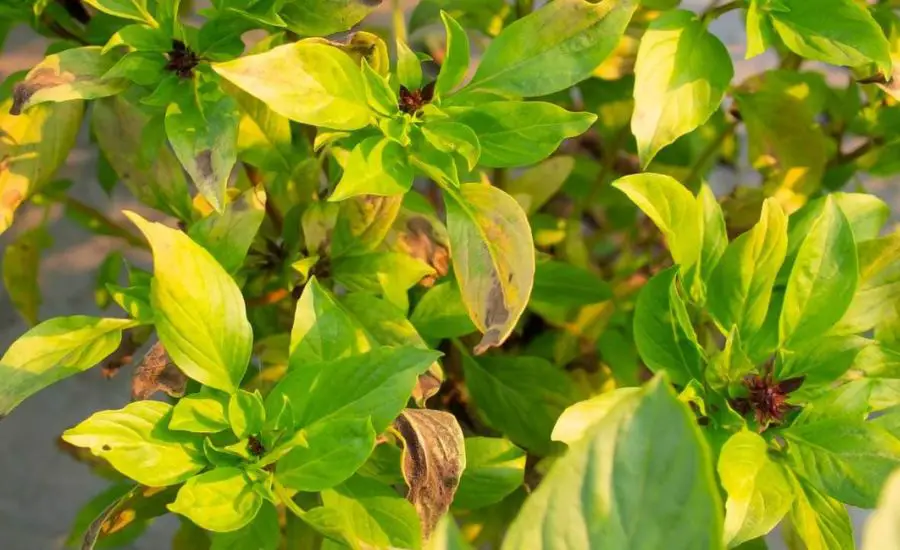
Contents
The main reasons for the appearance of yellow foliage in a basil
Basil plant yellow foliage can appear for various reasons. If you can pinpoint exactly why basil leaves to turn yellow, you can quickly fix the problem and save the basil plant.
Overwatering
It is not uncommon for a basil plant to turn yellow leaves because you water the plants abundantly. It must be understood that excessive watering is only the cause of the main disease that provokes a fungal disease – root rot. If you have tried at least to grow basil on the site, then you have come across this disease.
Even if you are growing a basil potted plant, the temptation to water it is higher. After all, it always seems that the soil is dry.
It is also noted that fungal diseases can appear due to poor drainage, which is important when planting in pots. Therefore, the basil plant’s roots rot, which negatively affects the appearance of the plant.
If the plant roots are constantly in contact with a lot of moisture, then breathing is blocked.
On the surface of the basil roots, harmful bacteria accumulate, provoking dangerous diseases. The bushes wilt, and you notice that the basil leaves are turning yellow.
It is recommended to water the basil plants not too abundantly. It is better not to add water than to over-moisten the bushes and provoke additional problems. If you suspect that the basil turning yellow due to excessive moisture, you have to check the roots.
If they are wet, you need to stop watering for a few days. For the roots to dry out faster, it is better to put the basil plants in the sun. Healthy roots should be white and slightly hairy.
If the roots are affected by root rot, they have a brown tint. The structure of the roots resembles mucus. It is also possible to notice an unpleasant odor caused by the development of bacteria.

How to prevent over-moistening?
To keep basil leaves from turning yellow, you need to control the amount of water. Stop watering when water starts to flow from the drainage hole.
It is impossible for the containers that stand under the pots to be filled with water. You can test it with your finger.
To do this, stick your finger into the ground to determine the degree of moisture. If the finger is wet, but not dirty, then you are doing everything right. If the earth is more like gruel, then you should stop watering until it dries out.
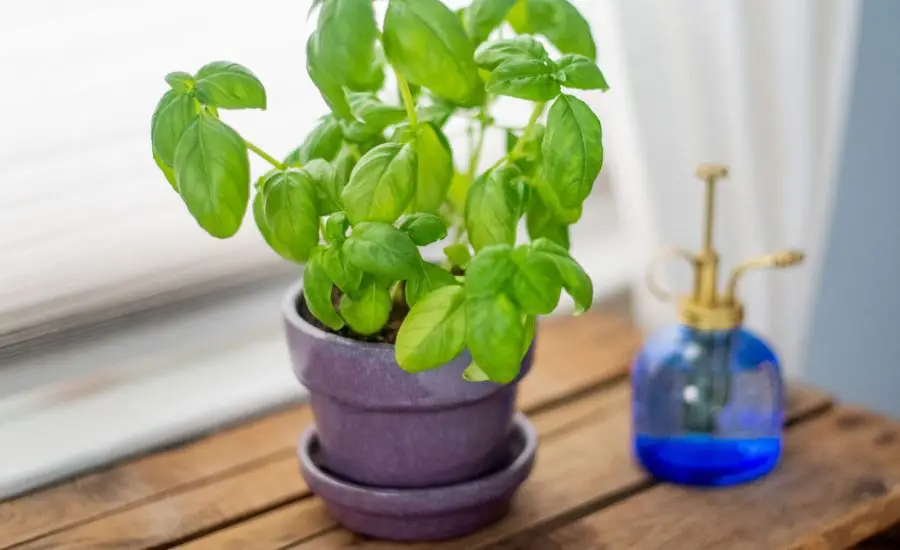
Fighting root rot
Unfortunately, it is impossible to fight root rot. You have to completely get rid of the bush.
The soil in which the basil plant has been grown must be disposed of. It cannot be used further. If the infection with root rot is insignificant, it is still possible to save basil plants.
The following steps are required:
- Remove the bush from the pot, and clean the roots from the ground. Let the roots dry for a few hours, then transplant.
- Cut off the affected areas of the root system, and transplant the bushes into clean soil and new pots. It is important that the soil dry.
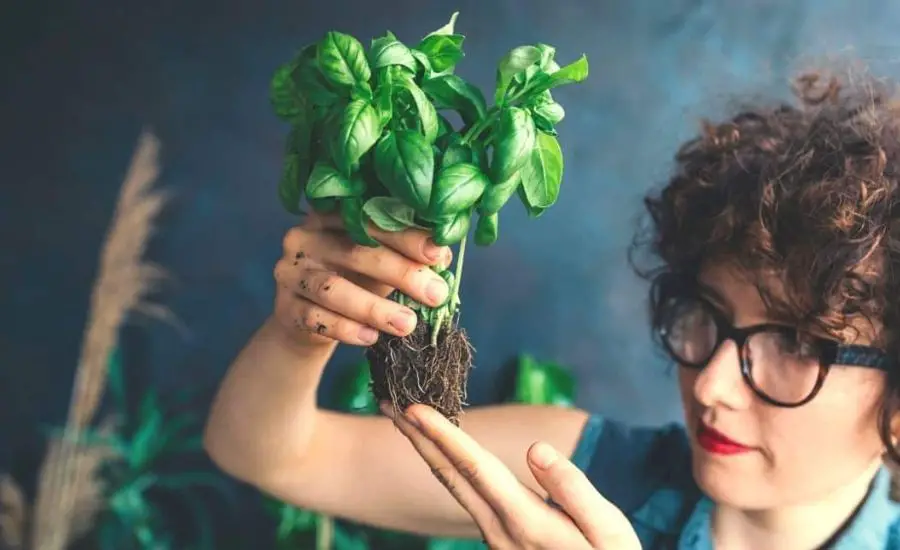
Using a dense potting mix
Basil often turns yellow because the planting was carried out with too dense potting soil. As you know, the basil plant prefers to grow in loose and airy soil. If you plant in dense soil, the possibility of necessary airflow is blocked.
Causes of compact soil in a pot
If you notice compact soil in the container, you likely bought the wrong soil. The potting soil may contain too much clay.
Also, the reason may lie in the fact that you are not using ready-made good quality potting soil, but soil from the garden.
Over time, even high-quality potting soil can become dense.
This is a normal process caused by time. During watering, the earth shrinks, which blocks the flow of air.
Determining that you are using the wrong soil is pretty easy. You need to press a little on it with your finger. If the texture is like butter, the soil is too dense.
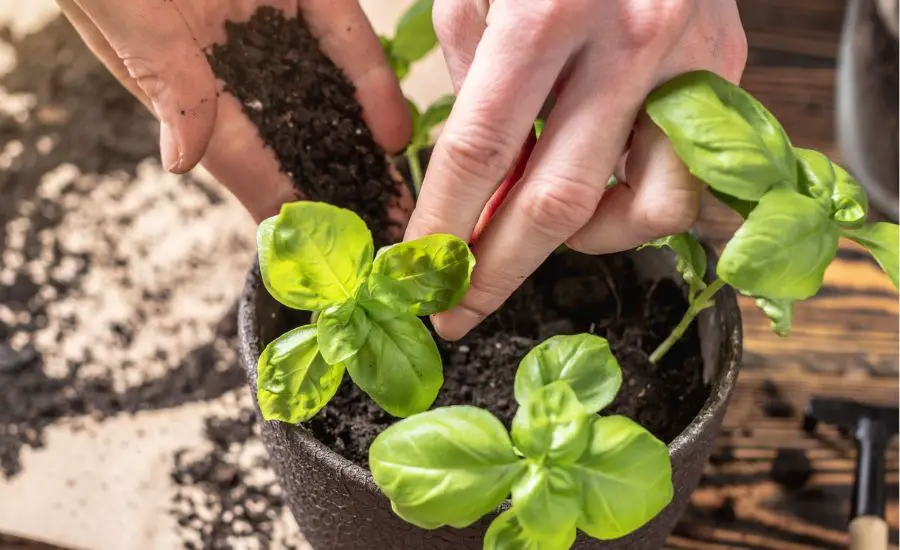
Correcting the situation
If you have determined that the basil leaves are turning yellow due to the use of low-quality soil, then you just need to replace it.
Choose ready-made soil that is commercially available. Pay attention to products from well-known companies that contain organics.
You can also remove yellow foliage from the bush if you increase the aeration of the soil.
To do this, you need to pierce it a little with toothpicks in several places. Try to work carefully. Indeed, you can damage the root system.
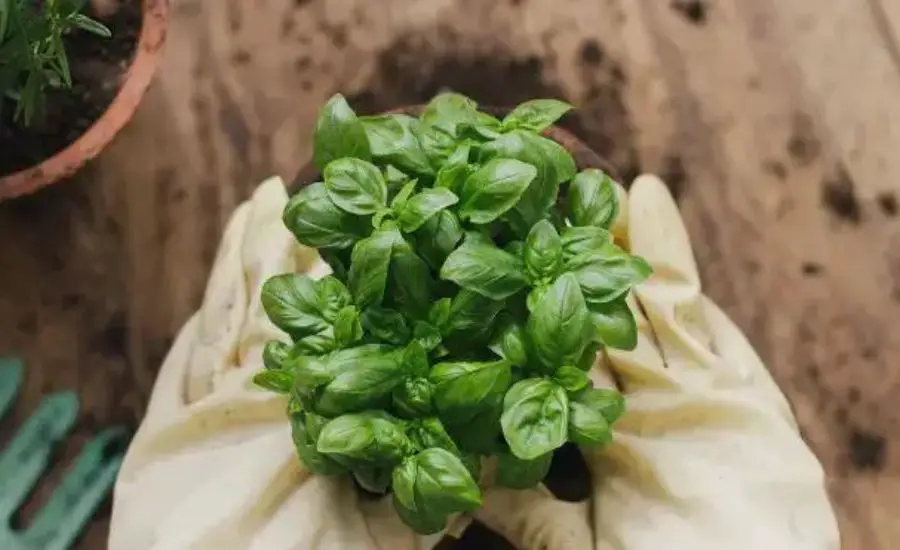
Downy mildew
If you notice yellow basil leaves, downy mildew may be the cause. This is a disease caused by fungal spores. Downy mildew develops if you overwet the soil and block airflow.
Symptoms of downy mildew
Determining that plant basil has been affected by downy mildew is fairly simple. Numerous black or gray spots appear on the underside of basil leaves. You need to lift the basil leaves to flip them. Visually, they resemble dust. Basil leaves themselves turn yellow over time.
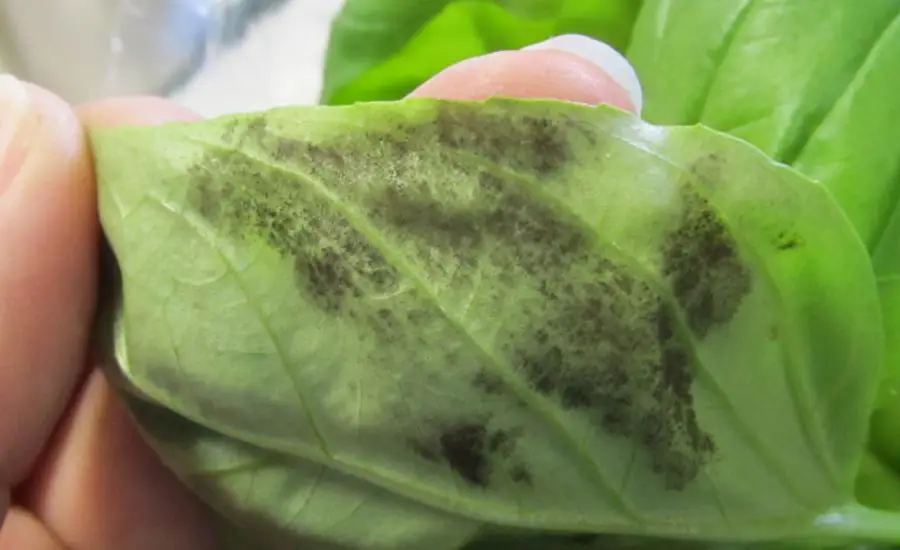
Downy mildew control
If you notice yellow basil leaves, there are several ways to fix the situation. First, you need to take the plant basil out of a moist environment, and evenly distribute them to improve aeration.
You can also repot yellow basil elsewhere to keep the disease from spreading to other basil plants.
It is important to remove yellow basil leaves by cutting them off with a sharp tool. Work carefully so that downy mildew spores do not spread. You can also treat yellow basil with a special spray that fights fungi. You can save money by making your own.
This requires some baking soda, vegetable oil, and soap. You need to mix 1 tablespoon of baking soda and vegetable oil.
Then pour in 250 ml of liquid soap and 4 liters of water. Shake the mixture thoroughly and process the yellow basil. This improves plant growth and controls downy mildew.
Incorrect soil pH
If you have tried growing basil, you know that the optimum soil pH should be between 6-7.5. If the indicators exceed 8, then the basil leaves turn yellow. This is explained by the lack of nutrients that block the acidic environment.
If you notice that the basil plant is turning yellow, it means that it does not have enough nitrogen. Therefore, you have to urgently fix everything.
You can determine if basil leaves are starting to turn yellow due to incorrect pH using a special test. It is sold in specialized stores.
You should also determine which part of the basil leaves to turn yellow. If basil plants lack nitrogen, then only the lower part of the bush turns yellow. The top remains green.
There are several reasons why soil pH may increase, namely:
- Use of old soil. To prevent the situation when basil leaves get turn yellow, planting should be carried out each time in new and treated soil.
- Use of unsuitable potting mix. On the market, you can find a different mixture for pouring, consisting of different ratios of components. If you use a potting mix that is high in acidic ingredients, the basil leaves turn yellow. Therefore, it is better to choose an alkali-based potting mix.
- The harm of tap water. In some areas, acidic water flows from the tap. Therefore, you need to check everything before watering.
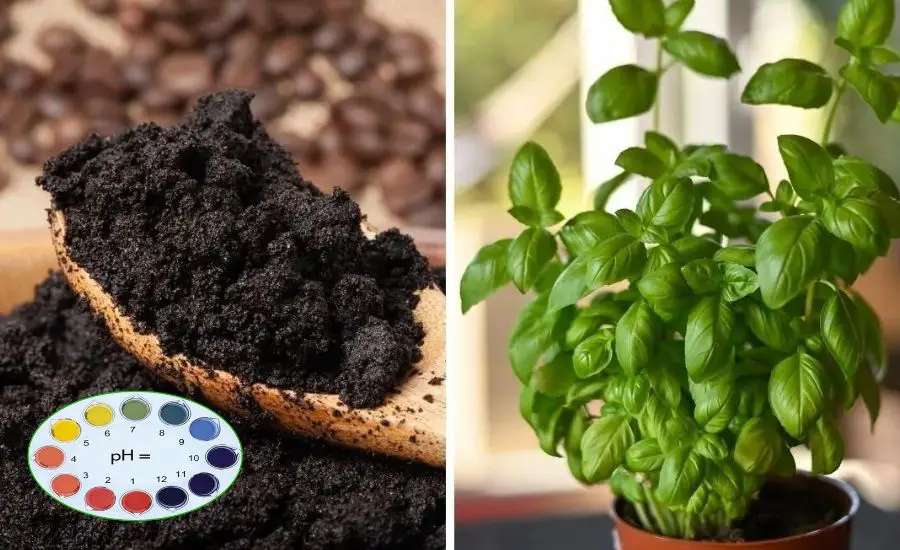
Temperature and lighting indicators
If you notice yellow leaves on basil, the reason may lie in the wrong ambient temperature, as well as lighting.
Basil is ready to eat in spring and summer, however, to eat yellow basil leaves is forbidden. Therefore, to prevent yellow foliage, temperature, and lighting should be monitored.
Yellow basil appears on the plots if the temperature falls below 59 ℉. To keep yellow foliage from filling the bushes, basil plants should be grown at temperatures between 77 ℉ and 86 ℉.
If you don’t want to have yellow basil, make sure the temperature doesn’t drop below 68 ℉. Otherwise, yellow foliage cannot be avoided. Yellow basil may appear because the basil plant does not have enough sunlight.
The leaves to turn yellow if the bushes are illuminated by the sun for less than 6 hours a day. Over time, the basil plant begins to wilt and develop a flexible stem. After you notice that the bush turns yellow. If you do not start solving the problem in time, then you risk losing your crop altogether.
Situations should not be allowed when the basil plant is in contact with the sun’s rays for more than 10 hours a day. After all, this can cause sunburn. To solve the problem caused by temperature, you should put pots with bushes in a warm place. The best place for plants indoors is a window sill on the sunny side of the house.
If the leaves to turn yellow, the cause may be hiding in the cool. Especially in winter. Therefore, try to put the basil plant in a warm room, which is periodically heated with a heater. This creates greenhouse conditions and prevents situations where the basil turns yellow.
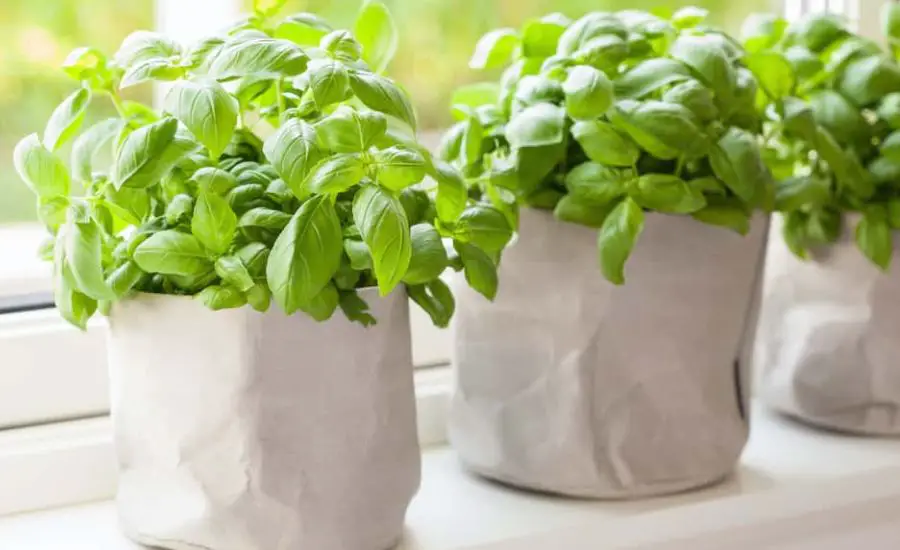
Pests
If you notice that the basil leaves yellow, then the cause may be an aphid infestation of the basil plant. This is a fairly common pest that appears for various reasons and is characterized by a rapid rate of reproduction. The yellowed leaves of the basil plant are quite often affected by small pests.
Their size can be only a few millimeters. Therefore, it is extremely difficult to notice aphids, even if you lift the leaves to turn them over. It must be said that aphids affect not only the basil plant. It can move to other cultures, infecting the entire area.
Reasons for the appearance of aphids
As you know, yellowing basil leaves can be caused by aphids. However, few know why they appear on the site. Everything is explained simply – the insect loves to eat yellow basil leaves and other crops. If a few midges appear on the site, then there is no harm to the plants.
If the basil plant is attacked by hundreds of insects, you notice that the leaves of the basil are yellow, and the bushes completely wither. In the case of a strong charge of basil, the plant may die altogether.
Signs of aphids
To tell if a basil plant has been infested with aphids, you need to lift the basil leaves to turn them over. You should search for spots of yellow-brown color. Their location may be random. If you notice yellowing basil leaves, they have aphid holes.
Another sign of aphids is a yellowish liquid with a thick texture. The presence of such a liquid indicates that aphids are present on the site. You should also arm yourself with a magnifying glass to find insects. They are presented in the form of small pear-shaped lumps. If they move, then it’s an aphid.
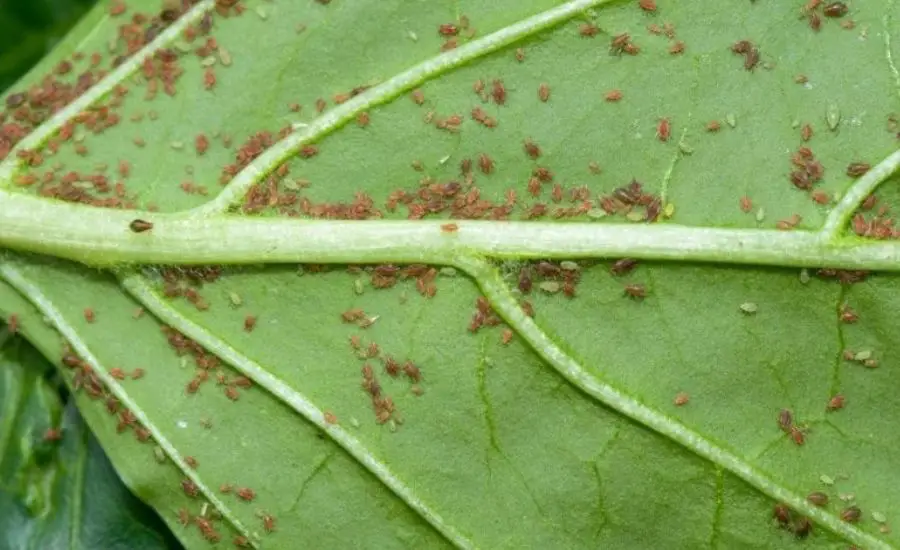
Aphid control
You can fight aphids with the help of special chemicals, or biological products. You can find them in specialized stores.
Presence of root-knot nematode
Often on the site, you can see root-knot nematodes. These are small insects that suck moisture out of basil leaf blades. Because of this, the bushes dry out. The size of root-knot nematodes is small, and they can be green or brown.
Fight against nematodes
To destroy pests, it is recommended to use “Nematicide”. Try to use it carefully, because the drug is very aggressive. It can destroy all living organisms on the site.
The use of insecticidal soap is allowed.
However, it can only be used on cloudy days. Otherwise, burns may form in the bushes. To control pests, you can use soapy water or diatomaceous earth. As a preventive measure, you should prepare a solution based on canola oil and detergent. You need to process the basil leaves.
Life cycle
Almost all types of basil are annual crops. Therefore, every year you have to deal with new plantings of bushes. Growth time may vary, depending on the conditions of care, as well as environmental conditions. After flowering, the bushes begin to gradually dry out, which is the norm. You can’t fix it, even if you try your best.
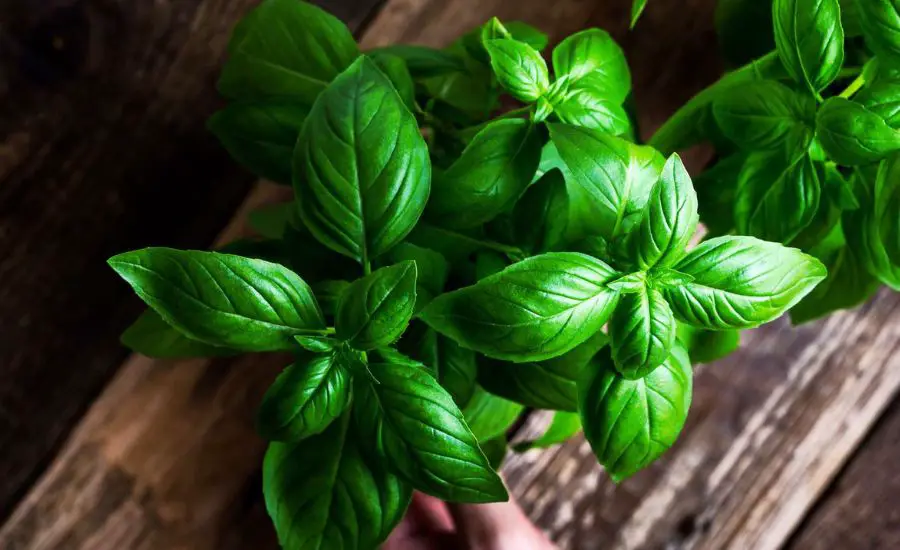
FAQ
During the cultivation of basil, you can encounter numerous questions. Almost all of them are associated with the causes of the appearance of yellow foliage.
Should I remove the yellow leaves from the basil?
If you notice a small number of yellow foliage on the bushes, you can cut them off. You need to work with sharp instruments that must first be disinfected. This prevents the spread of pests and fungal diseases, if any.
If the bush is completely yellowed, then pruning does not give any result. In this case, you have to get rid of all plants, along with the root system.
What does overwatered basil look like?
It is not difficult to determine that you have waterlogged the soil. The leaf plates on the bushes become lethargic and drooping. At the base, you can see yellow foliage. The introduction of peat moss into the soil helps to correct the situation. You also need to constantly drain the water from the bottom saucer.
Why are my basil leaves turning yellow at the bottom and curly top?
A common situation is when yellow basil leaves form at the bottom, and the top begins to curl. This is because the bushes do not have enough oxygen. After all, you water them abundantly. That is, a similar symptom indicates the presence of root rot. The indoor plant suffers from this.
How often should basil be watered?
The soil in which basil is grown should be slightly moist. Watering should be done every week so that the depth of wetting is no more than 1 inch. If you are planting basil in containers, then watering is required more often. You must notice that you do not have soil dry.
Results
As you can see, basil leaves yellow can appear for various reasons. Almost all of them are associated with improper care. Therefore, it does not be difficult to correct the situation. If the cause is the life cycle of the plant, then nothing can be fixed. You just have to calm down.
Remember that it is very important to take care of the plants regularly, and then they will grow beautiful and strong. If you have any questions about plant care, I will be happy to answer them. Write in the comments also your methods for solving the problem that I considered in the article. I would be glad to get interesting information from you.



